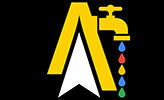GoogleApi.ContentWarehouse.V1.Model.GoodocLogicalEntityLink
Table of Contents ▼
Jump to a specific part of the page:
- Description
- Attribute List
- Attributes
- Type
- Function
- Related links
- Possibly related Modules
Description
NOTE(gponcin) 2008/11 This is repeated for articles where we may have multiple links in one entity. From Vivek (Atlantis): "The block segmenter outputs a list of headlines on a page as a single logical entity that we attach to the logicalentity(1) for the goodoc."
Attributes List
This module has the following attributes (case-insensitive ascending order):
Attributes
-
Anchor(type:String.t, default:nil)
- The preferred way to link to an element is to create an AnchorLabel in the target element and name it here. Multiple elements may contain the same Anchor string. -
BlockId(type:integer(), default:nil)
- -
DocId(type:integer(), default:nil)
- Links may also specifically locate the target element with the following indices. Note that during the course of layout analysis, goodoc elements may move around, so such hard links should be created only very late (or not at all -- Anchors would be more reliable target addresses). -
PageId(type:integer(), default:nil)
- -
ParagraphId(type:integer(), default:nil)
- -
RouteId(type:integer(), default:nil)
- -
SymbolId(type:integer(), default:nil)
- -
Url(type:String.t, default:nil)
- If not defined, link points to the current doc -
WordId(type:integer(), default:nil)
-
Type
@type t() :: %GoogleApi.ContentWarehouse.V1.Model.GoodocLogicalEntityLink{
Anchor: String.t() | nil,
BlockId: integer() | nil,
DocId: integer() | nil,
PageId: integer() | nil,
ParagraphId: integer() | nil,
RouteId: integer() | nil,
SymbolId: integer() | nil,
Url: String.t() | nil,
WordId: integer() | nil
}
Anchor: String.t() | nil,
BlockId: integer() | nil,
DocId: integer() | nil,
PageId: integer() | nil,
ParagraphId: integer() | nil,
RouteId: integer() | nil,
SymbolId: integer() | nil,
Url: String.t() | nil,
WordId: integer() | nil
}
Function
@spec decode(struct(), keyword()) :: struct()Data sourced from HexDocs : GoogleApi.ContentWarehouse.V1.Model.GoodocLogicalEntityLink
